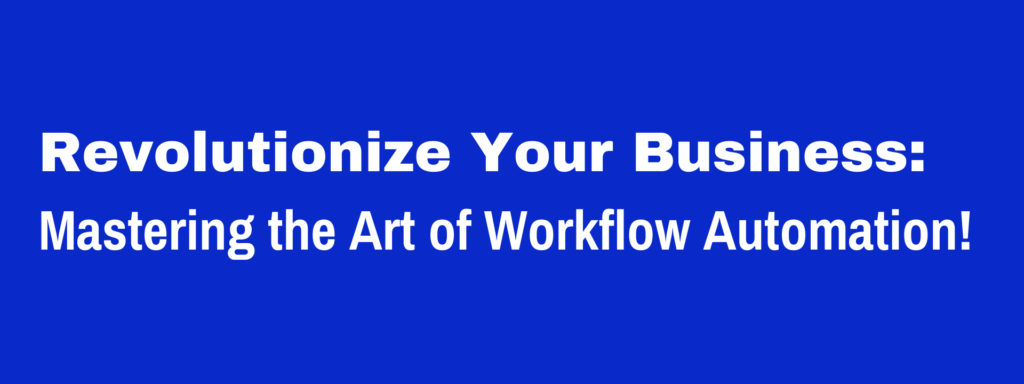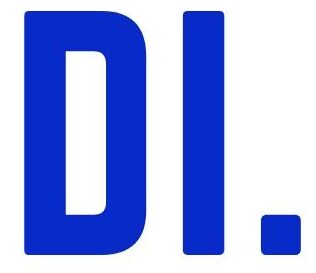
Revolutionize Your Business:
Mastering the Art of Workflow Automation!
In the ever-evolving landscape of contemporary business, one of the most pivotal strategies for success lies in the mastery of workflow automation. For business owners and investors, the effective utilization of workflow automation can serve as a linchpin for achieving heightened operational efficiency, substantial cost savings, and, ultimately, amplified profitability. This comprehensive guide aims to unravel the complexities of workflow automation, delineate its benefits, elucidate key components, and furnish actionable steps for those seeking to revolutionize their business operations.
I. Introduction
Embracing Technological Evolution
In an era where adaptability is synonymous with survival, integrating workflow automation is not just a choice; it is a strategic necessity. At its essence, workflow automation involves leveraging technology to automate and streamline routine tasks and processes. The goal is to reduce manual effort, mitigate errors, and enhance overall operational effectiveness, positioning businesses for sustained success.
II. Understanding Workflow Automation
Deciphering the Core Concept
At the heart of workflow automation lies the optimization and orchestration of business processes. By identifying tasks that are repetitive or time-consuming, organizations can employ automation tools to execute these tasks efficiently. This, in turn, frees up human resources to focus on more strategic and value-added activities.
A Real-world Lens
Consider the hypothetical scenario of a digital marketing agency faced with managing numerous client campaigns simultaneously. Through the implementation of workflow automation, this agency could streamline content creation, approval processes, and reporting, resulting in a substantial increase in project throughput without compromising quality.
III. The Benefits for Business Owners and Investors
Increased Operational Efficiency
In the pursuit of operational excellence, workflow automation emerges as a potent force. Automating repetitive tasks and standardizing processes not only saves time but also reduces the risk of errors that can arise from manual intervention.
Cost Savings
The financial implications of workflow automation are significant. By automating routine tasks, businesses can achieve substantial cost savings in terms of labor, materials, and operational expenses. The initial investment in automation tools often pays off rapidly as efficiency increases and overhead decreases.
Enhanced Productivity
Workflow automation empowers teams to focus on strategic, high-value tasks by automating routine activities. The result is a boost in overall productivity, allowing businesses to accomplish more with the same or fewer resources.
Competitive Advantage
In a competitive business landscape, staying ahead is crucial. Workflow automation provides a competitive edge by enabling businesses to respond swiftly to market changes, deliver superior customer experiences, and outpace competitors.
IV. Key Components of Workflow Automation
Implementing an effective workflow automation strategy requires a nuanced understanding of its key components. As business owners and investors, comprehending these elements is crucial for making informed decisions that align with organizational goals.
Identification of Repetitive Tasks
The first step in adopting workflow automation involves a meticulous examination of existing processes to identify tasks that are repetitive, time-consuming, and prone to human error. By pinpointing these elements, businesses can selectively target areas where automation can yield the most significant impact. This identification process serves as the foundation for designing an efficient and streamlined automated workflow.
Selection of the Right Automation Tools
Choosing the appropriate automation tools is paramount to the success of any workflow automation initiative. A plethora of tools exists, ranging from simple task automation platforms to comprehensive business process management suites. Business owners and investors must carefully assess the specific needs of their organization and select tools that align with their workflow goals. Factors such as scalability, integration capabilities, and user-friendliness should be taken into account during the selection process.
Integration with Existing Systems
Seamless integration with existing systems is a cornerstone of successful workflow automation. Businesses often operate with an ecosystem of software applications and tools. For automation to be truly effective, it must integrate harmoniously with these pre-existing systems. Whether it’s customer relationship management (CRM) software, project management tools, or communication platforms, a well-integrated automation solution ensures a cohesive and interconnected workflow across the organization.
User Training and Adoption
The success of workflow automation is not solely dependent on the technology itself but also on the users who interact with it. Adequate training and fostering a culture of adoption are vital components. Educating employees on the benefits of automation, providing hands-on training sessions, and addressing concerns or misconceptions contribute to a smooth transition. User feedback mechanisms should also be established to continuously refine and optimize automated processes based on real-world experiences.
Continuous Monitoring and Optimization
Workflow automation is not a one-time implementation; it’s an ongoing process that requires continuous monitoring and optimization. Regularly assessing the performance of automated workflows, identifying bottlenecks, and making necessary adjustments are essential for ensuring sustained efficiency gains. This iterative approach allows businesses to adapt to evolving operational requirements and technology advancements, maximizing the long-term benefits of workflow automation.
Incorporating these key components into the implementation plan will empower business owners and investors to not only automate existing processes but also to foster a culture of continuous improvement and innovation within their organizations. By embracing these components, businesses can leverage workflow automation as a dynamic and responsive tool for driving success in today’s competitive business environment.
V. What we learned so far:
In conclusion, this guide outlined the transformative power of mastering workflow automation. It emphasized the need for a strategic and holistic approach, combining technology, user adoption, and continuous improvement. The call to action resonates with business owners and investors, encouraging them to embark on the journey of workflow automation for sustained success and competitiveness.
As you embark on the path to revolutionize your business through workflow automation, remember that the true power lies not only in the technology itself but in the strategic orchestration of its components. By embracing automation as a dynamic and responsive tool, businesses can navigate the complexities of the modern business landscape and position themselves for enduring success.

